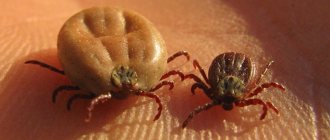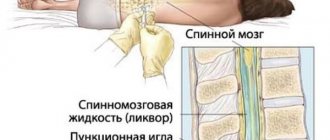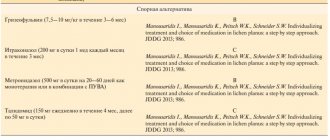History of discovery
The medical name of this disease is systemic tick-borne borreliosis, less often it is called erythemal spirochetosis, meningopolyneuritis, etc.
Important!
The main difference between the disease is its only way of transmission: through the bite of an ixodid tick. The infection is not transmitted from a sick person to other people, which makes it absolutely safe for family and others.
The official name was given by the name of its causative agent, which belongs to the type of spirochete - Borrelia burgdorferi. And the name Lyme disease became known in international medicine after a strong outbreak of infection recorded in 1975 among residents of the city of Lyme in the state. Connecticut (USA). After a study conducted by scientists on children with juvenile arthritis, the symptoms were first described and the pathogenic organisms that caused the disease were isolated.
Pathogens and vectors
The causative agents of borreliosis are 3 types of borrelia (Borrelia burgdorferi, Borrelia garinii, Borrelia afzelii) - small pathogenic microorganisms no more than 20 microns in size, similar to a twisted spiral and related to spirochetes. In nature, carriers of bacteria are wild and domestic animals: deer, cows, sheep, horses, goats, rodents, birds, etc.
In European countries, Lyme disease is transmitted by certain species of ixodid ticks: Ixodes ricinus and Ixodes persulcarus, and in the USA and Canada - Ixodes dammini.
On a note!
When the parasite bites an infected animal, borrelia enters its body, causing it to become a lifelong carrier of the disease. Moreover, the tick itself does not suffer from it. After it bites its victim, borrelia are injected into the body along with saliva, which enter the circulatory system and infect the person.
Risk factors
Risk factors for borreliosis include:
- deciduous forests, glades;
- parks, lawns, local areas with lush vegetation;
- period from March to October;
- pets on whose body a tick can enter a person’s home.
Risk groups include:
- residents of rural areas adjacent to the forest zone;
- hunters, fishermen, foresters;
- lovers of forest tourism and recreation.
There is a misconception that infection does not occur if the tick is removed from the human body within 12 hours after attachment. It is not supported by statistical data, and there is no scientific basis for this theory.
Spread of borreliosis
Lyme disease or tick-borne borreliosis
Lyme disease is common only in the Northern Hemisphere, where there are mixed deciduous forests and ticks live. Foci of infection have been recorded in the USA and Canada, some countries of Western and Eastern Europe. There are also outbreaks of Lyme disease in Russia, Ukraine, Moldova, Lithuania, Estonia and Latvia.
In some countries where there are natural foci of borreliosis, almost 90% of ticks are infected, which spread this infection. Moreover, parasites become carriers for life, and female ticks transmit spirochetes even to their larvae, which from the moment of birth become capable of spreading Borrelia.
On a note!
The most dangerous period for people who can become infected with such an infection after a tick bite occurs in the warm months of the year: from May to September, the period of maximum parasite activity.
The causative agent of tick-borne borreliosis is a spirochete
In 1984, R. Johnson described a new species of spirochete of the genus Borrelia of the family Spirochaetaceae - Borrelia burgdorferi. The bacteria are named after the microbiologist W. Burgdorfer, who in 1981 first isolated this type of Borrelia from the intestines of Ixodid ticks.
Rice. 4. Pictured on the left is Amédée Borrell (1867–1936). At the beginning of the twentieth century, he studied a genus of spirochetes, named Borrelia in his honor. In the photo on the right is microbiologist W. Burgdorfer. In 1981, he first isolated a species of Borrelia from the intestines of ixodid ticks. Since that time, the causative agent of borreliosis has been called Borrelia burgdorferi.
Rice. 5. The photo shows spirochetes of the genus Borrelia burgdorferi (borrelia). The bacteria are very small. They have the appearance of a convoluted spiral, around the axial thread of which the cytoplasm is located. Bacteria are present in small numbers in tissues.
Today, more than 10 genomic groups of pathogens that belong to the Borrelia burgdorferi sensu lato complex have been identified and studied. They are unevenly distributed around the globe. Each type of Borrelia causes its own disease. However, they are all united under the general term “Lyme disease” or “ixodid tick-borne borreliosis.” In highly endemic areas, spirochetes are present in 90% of ticks.
Rice. 6. Ticks have huge salivary glands that span the length of their body. At the first moment of the bite, the secreted saliva firmly glues the proboscis to the skin. The liquid part of saliva anesthetizes the wound, destroys the vascular wall and suppresses the immune response of the host.
Rice. 7. Female encephalitis tick before and after sucking blood.
Tick-borne borreliosis and tick-borne encephalitis are two different infectious diseases caused by ixodid ticks.
Stages of the disease
After a tick bite and Borrelia penetrates the human skin, they enter nearby lymph nodes, where they actively multiply. Within a few days, the bacteria pass into the blood and are carried by vessels throughout the body. At the same time, they continue to multiply, gradually affecting the nervous, cardiovascular systems, joints and muscles.
On a note!
The reaction of the victim's immune system is usually acute: antibodies are produced, but they are not able to completely destroy the infection. Most often, borreliosis disease becomes chronic, in which the patient's condition gradually worsens due to the increase in the autoimmune process and the constant release of toxic substances.
The incubation period, i.e. the time before the first negative symptoms appear, ranges from 3 to 32 days. Most often, the disease manifests itself 1-2 weeks after a tick bite.
Tick-borne borreliosis (ICD code 10-A69.20) occurs in 3 stages:
- Borrelia multiply under the skin and in the lymph nodes, lasting up to 40 days.
- The phase of active spread of pathogenic bacteria through the circulatory system throughout the human body, which lasts 5-6 months.
- Chronic borreliosis, which affects the nervous, musculoskeletal or cardiovascular systems, lasts several years.
At each stage, certain symptoms appear, by which specialists can clearly diagnose the disease.
Why is the chronic form of borreliosis dangerous?
Chronic borreliosis is characterized by the following manifestations: frequent colds, pinpoint rash or erythema of varying sizes, other various skin changes, intense or moderate headache, various chest pains, significant heart rhythm disturbances, arthritis and steady memory deterioration.
The patient also often experiences osteoporosis, the cartilage may become thinner, and degenerative processes rarely occur. Chronic borreliosis often requires a repeated course of long-term and intensive antibiotic therapy.
The chronic form of tick-borne borreliosis can lead to human disability if not treated in a timely manner.
Symptoms of borreliosis
Symptoms of borreliosis
General and specific manifestations of stage 1 disease are as follows:
- headache, temperature rises to +38°C, chills;
- migrating pain and aches in joints and muscles;
- nausea, vomiting;
- soreness and enlargement in the lymph nodes;
- the appearance of ring-shaped erythema at the site of the bite, which is a specific symptom and makes it possible to identify Lyme disease at the very beginning;
- occasionally, a rash due to borreliosis throughout the body, conjunctivitis is possible;
- sore and sore throat, coughing, runny nose.
Doctors detect erythema with borreliosis in 70% of patients. It is characterized by the formation of a red lump – a papule – at the site of the tick bite. It gradually expands in diameter and takes the shape of a clearly defined ring raised above the skin. The center becomes paler and the rim becomes a rich red color. The erythema zone with tick-borne borreliosis (photo below) can reach from 10 to 60 cm. Occasionally several red rims are visible.
In very rare cases, the disease is asymptomatic, that is, without the appearance of erythema and other signs. Often an infected person does not feel any discomfort due to the appearance of erythema, but sometimes it can hurt, burn or itch. It is also possible that secondary red rings may appear in areas where no tick bites have occurred.
Erythema can persist on the patient’s skin for quite a long time, on average 30 days, sometimes it goes away within a few days. In some patients, rings are noticeable on the body, even after several months. After disappearance, pigmentation, dryness and flaking remain on the skin.
Important!
If a sick person does not pay attention in time to the initial negative symptoms of Lyme disease after a tick bite, then they can go away even without the use of medications. However, then the disease passes into the 2nd stage, which is more severe, in which the danger to health increases.
ICD-10 code
In the modern international classification of diseases, tick-borne borreliosis has its own code – A69.2 and is characterized as a focal, predominantly transmissible infectious pathology.
The disease can occur in different ways:
- acute, with a sharp onset and severe symptoms;
- subacute, with vague clinical signs;
- chronically, with alternating periods of exacerbation and remission (periods of subsidence of the disease).
Variants of infection according to the severity of its manifestations include:
- light form;
- medium shape;
- severe form.
Classic Lyme borreliosis goes through several stages in its development:
1. Local infection , which can be manifested by the formation of erythema or occur without it, with slight swelling and redness at the site of the tick bite.
2. Dissemination . This is the spread of bacteria throughout the body and their damage to various systems (musculoskeletal, cardiovascular, nervous, etc.).
3. Persistence . Chronitization of the disease with the appearance of serious changes in the body, detection of inflammation and degenerative changes in the skin, myocardium, central nervous system and (or) joints.
Stage 3: chronic
Symptoms of the chronic stage of borreliosis
The last stage of borreliosis develops several months after the first signs of the disease. It is characterized by the development of chronic Lyme disease, in which one of the main systems of the patient’s body is affected.
Typical symptoms and consequences of borreliosis:
- chronic arthritis: damage to small and large joints, expressed in their gradual deformation and the development of osteoporosis;
- atrophic acrodermatitis: the appearance of blue-red spots on the skin in the area of the knees, elbows, the inside of the hands, soles, thickening occurs, and then atrophy and thinning; benign lymphadenosis of the skin;
- diseases of the nervous system: encephalopathy, polyneuropathy and encephalomyelitis, which manifest themselves in the development of paresis, changes in sensitivity, coordination, deterioration of mental activity (memory, thinking, intellectual abilities), epileptic attacks, hearing or vision impairment, general lethargy, depression.
Important!
If incorrectly diagnosed and untreated, borreliosis is dangerous precisely because of its severe complications, which remain with a person for life and often lead to disability. Therefore, it is so important to pay attention to your own well-being after an accidental tick bite and seek medical help in a timely manner.
Consequences
Lyme disease is a dangerous infection that is often complicated by:
- neurological symptoms: polyneuropathies, encephalopathies, swallowing disorders, motor activity, damage to hearing, vision, memory, perception, thinking;
- dystrophic and atrophic changes in the dermis: lymphadenosis, dermatitis, scleroderma;
- cardiac pathologies: myocarditis, pericarditis, arrhythmias;
- asthenovegetative syndrome (weakness, constant fatigue, loss of performance)
The prognosis for Lyme borreliosis is serious and the earlier treatment is started, the lower the risk of complications.
Diagnosis of borreliosis
If Lyme disease is suspected, in addition to a general examination of the patient, specialists identify erythema and other specific signs of the disease. If they are detected, clinical blood and tissue tests are performed to confirm the diagnosis.
Occasionally, there are no external signs of the disease, and laboratory diagnosis is the only reliable way to confirm the presence of the disease.
Borrelia is quite difficult to identify in a patient, so indirect methods are used, the effectiveness of which reaches 50%.
Basic laboratory methods for identifying Lyme disease:
- hemotest for borreliosis: blood tests for the presence of infection, carried out 7-10 days after a tick bite;
- searching for Borrelia DNA in the blood is done using the polymerase chain reaction method;
- immunochip for borreliosis - a study of blood serum using a diagnostic test system, which was developed at the Russian Federal Budgetary Institution Central Research Institute of Epidemiology, allows you to determine antibodies in the blood to 8 groups of Borrelia antigens, which are common in the Russian Federation.
On a note!
To clarify the severity of damage to various organs of the patient, X-ray and ultrasound examinations, ECG and EEG, joint puncture and skin biopsy are used. All patients with borreliosis undergo quarterly examinations for a period of up to 2 years.
Lyme disease treatment
Antibiotics in tablets for borreliosis
When the diagnosis is confirmed, patients undergo inpatient treatment in the infectious diseases department of the hospital. In some mild cases, it is possible to cure borreliosis at home, but only under the constant supervision of specialists.
The effectiveness of treatment depends on the stage of the disease: in the initial period it is higher. Outpatient treatment can be prescribed if it is confirmed that there is no mixed infection, i.e. there is no infection with the encephalitis virus. When treating this disease, it is recommended to follow a gentle diet and abstain from alcohol.
Drug treatment of borreliosis is carried out in 2 areas:
- etiotropic, including the effect on the pathogen itself, which is carried out using a course of antibiotics;
- symptomatic – therapy of affected organs and systems with the help of anti-inflammatory, detoxification, antihistamine, cardio- and restorative medications, complex vitamins.
At stage 1, the doctor prescribes antibiotic tablets for borreliosis for 10-14 days:
- Tetracycline (price 50-60 rub.);
- Doxycycline (about 30 rubles);
- Amoxicycline (80-90 rub.);
- Cefuroxime (about 100 rubles).
The prescribed dosage must be strictly adhered to; it is strictly forbidden to shorten the course due to the possible survival of some Borrelia. At this stage, the prognosis for treatment is favorable: in most cases, adequate therapy leads to complete recovery.
At the 2nd stage, treatment of borreliosis with antibiotics is carried out through intravenous injections of Penicillin and Ceftriaxone. The duration of therapy is 2-3 weeks. The likelihood that a patient will completely recover from tick-borne Lyme disease is 85-90%.
At stage 3, Lyme disease has to be treated with antibiotics for 28 days using drugs of the penicillin group. The most commonly prescribed long-acting form of the drug is Extensillin, which replaces the 8-fold frequency of taking the antibiotic per day.
Important!
Pathogenic Borrelia bacteria remain in the lymph system of a recovered person for 10 years. You should also know that immunity is not developed after borreliosis, so re-infection is possible, even 5-7 years after recovery.
Consequences of the disease after a tick bite
Antibiotic therapy provides good effectiveness in treating the symptoms of borreliosis. And the consequences for a person become significantly less. Timely access to a medical facility reduces the risk of complications and transition to a chronic form.
After all, this disease can affect the nervous system, resulting in inflammation of the spinal cord and brain, paralysis, impaired coordination of movements, and memory loss. In addition, there are often inflammatory processes in the membranes of the heart, various joint lesions, and decreased ability to work. All Lyme disease survivors are seen by a doctor for two years. Only after this is a diagnosis of its transition to a chronic form made or complete recovery occurs.
Lyme disease in children
Unlike the course of borreliosis in adults, children in most cases are characterized by damage to the nervous system and the appearance of symptoms of meningitis. Children under 7 years of age practically do not get sick, and the symptoms of borreliosis in older children, clinical signs and manifestations of the disease are similar to those listed above.
Borreliosis in children
After recovery, young patients may still have negative reactions in the form of sleep disorders, unstable mood and increased nervous excitability. All these unpleasant consequences of borreliosis disappear after a while.
Classification
| Forms | Tick-borne borreliolatent forms – absence of symptoms with a laboratory confirmed diagnosis of Lyme borreliosis;
|
| Course of the disease | According to the course of the disease, the following forms are distinguished: Acute (disease duration up to 3 months) and subacute course (3-6 months):
|
| Degree of expression in humans | According to the severity of pathological phenomena, 4 forms of the disease are distinguished:
|
Traditional methods of treatment
When treating Lyme disease with medication, it is recommended to follow a special diet and take foods that normalize the intestinal microflora. To remove toxins, you should drink plenty of water, fresh juices, green tea and oolong tea.
Additionally, you can use folk remedies to help improve the patient’s condition:
- White pharmaceutical clay helps to remove toxins, which should be drunk for six months in the form of a drink: 1 teaspoon per glass of water, leave overnight, and in the morning stir and drink on an empty stomach.
- Seaweed powder helps to cleanse the blood and lymph: 1 packet for 10 days in the evening, break for 10 days and repeat for up to 5 months.
- Herbal decoctions and infusions of nettle, horsetail, wormwood, immortelle, borage, calendula, linden flowers, rowan, and rosehip are prepared from 1 tablespoon of herb per 0.5 liter of boiling water, drink within 15 minutes. before meals, 250 ml. The treatment is long-term, plant species are alternated monthly for several years;
- To treat erythema, it is recommended to make compresses from herbs.
- Lubricate the tick bite site with the juice of celandine, plantain, and walnut oil.
Important!
Throughout the course of treatment for Lyme disease, alcohol, coffee, sweet foods, and nutritional supplements are contraindicated due to the strong increase in load on the liver and provoking bacterial growth.
What happens in the human body
The causative agent of tick-borne borreliosis enters the body with the saliva of the tick. From the site of the bite, borrelia travel through the blood and lymph to internal organs, lymph nodes, and joints. The pathogen spreads along the nerve pathways, involving the membranes of the brain in the pathological process.
The death of bacteria is accompanied by the release of endotoxin, which triggers immunopathological reactions. Irritation of the immune system activates general and local humoral and cellular responses. The immediate production of IgM antibodies, and a little later IgG, occurs in response to the appearance of the flagellar flagellar antigen of bacteria.
As the disease progresses, the set of antibodies to Borrelia antigens expands, which leads to long-term production of IgM and IgG. The proportion of circulating immune complexes increases. These complexes are formed in the affected tissues and activate inflammatory factors. The disease is characterized by the formation of lymphoplasmatic infiltrates in the lymph nodes, skin, subcutaneous tissue, spleen, brain, and peripheral ganglia.
Preventing Lyme disease
The only preventive measures are methods to prevent ticks from getting on the human body; there is no vaccination against borreliosis. When visiting the forest, going on a picnic or in nature, it is recommended to wear the most closed clothing possible and use repellents to repel parasites.
If you find an arachnid attached to the skin, it is recommended to place it in a glass container after removing the tick. Then take it to the laboratory, where the tick can be tested for borreliosis to determine the likelihood of human infection.
If infection is suspected, it is recommended to carry out antibiotic therapy consisting of 2 drugs for prophylaxis:
- Doxycycline - take 100 mg daily for 5 days;
- Ceftriaxone – 100 mg 1 r. per day 3 days.
Taking such drugs, as evidenced by reviews of patients with borreliosis, will help prevent Lyme disease in 80-95% of cases after a bite from an infected tick.
How to remove a tick?
The surest option is for the tick to be removed by a medical professional. In some cases you have to do this yourself. You must remove the insect very carefully so as not to leave part of the proboscis under the skin. This should be done like this:
- Grab the insect very close to the mouthparts with tweezers or make a loop of strong thread and drape it over the insect. Keep the body strictly perpendicular to the surface of the bite and rotate it around its axis 2-3 times. It is recommended to turn clockwise.
- Disinfect the bite site with iodine, alcohol or any alcohol-containing products.
- Wash your hands thoroughly with soap.
- If the head or proboscis is torn off, treat the bite site with alcohol or iodine.
Place the removed tick in a closed container, putting a small piece of damp cotton wool there, and take it to a medical facility where it will be examined.








